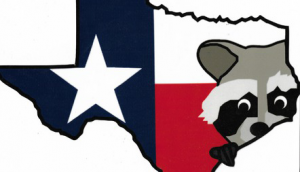Bobcats are frequently observed in Texas, with these native felines showing a preference for specific habitat locations. Knowing their favored roaming grounds is essential for effective bobcat control in Texas, benefiting wildlife enthusiasts and individuals interested in safeguarding livestock and pets.

Bobcat Habitats in Texas
East Texas Piney Woods
Bobcats often call forested areas home. Enveloped by a curtain of leaves, they reap the rewards of a secluded haven, where every snap of a twig might signal dinner. In Texas, forests in the eastern region offer ideal conditions for these predators.
The Piney Woods of East Texas is a prime location. Imagine a landscape dominated by towering pine, oak, and hickory trees – it’s a haven for bobcats, who thrive in this lush environment. As you trek through the dense underbrush, you’ll likely stumble upon small mammals going about their business – until a bobcat’s patience wears thin.
Texas Hill Country
While forests are preferred, bobcats also adapt to grasslands and prairies. It’s a hunting paradise – the open spaces offer ample opportunities for them to chase down nimble rodents and other quick small fry.
The Hill Country, with its mixed terrain, is another habitat. This landscape’s dynamic duo – open fields and dense woods – presents a thrilling hunting experience. Bobcats here are often seen near creeks and streams.
Trans-Pecos Region
Surprisingly, bobcats can also be found in desert regions of Texas. Survival in the harshest of environments is their specialty, thriving in a world where every oasis is a mirage, and every hunt is a gamble.
The Trans-Pecos Region in West Texas is one such place. Nature doesn’t go easy on this unforgiving landscape, part of the Chihuahuan Desert. Yet, bobcats manage to find food and shelter among the sparse vegetation and rugged landscape.
Bobcat Behavior and Movement
Hunting Patterns
Bobcats are solitary hunters. You’ll find them most active during those lazy hours when day bleeds into night, and night creeps into day. When the times get tough, they’re out hunting small game – rabbits, birds, and rodents become their next meal ticket.
Their hunting technique involves stalking their prey quietly and then pouncing. Where tree canopies stretch overhead or sunbeams stretch across the landscape, this method remains unfaltering.
Territorial Ranges
Bobcats have specific territories that they defend. These ranges vary based on the availability of food and the density of the population.
To mark their territories, bobcats use scent markings and visual cues. This behavior helps them avoid conflicts with other bobcats.
Seasonal Movements
Bobcats do not migrate like some other animals, but they do adjust their ranges seasonally. In winter, they might move closer to human settlements in search of food.
Human Interaction and Control
Impact on Livestock and Pets
Bobcats rarely pose a threat to humans, but they can impact livestock and pets. Small livestock, such as chickens and young goats, are particularly vulnerable.
Effective bobcat control in Texas includes securing livestock pens and keeping pets indoors during peak hunting times. Installing motion-activated lights and using fencing can also deter bobcats.
Wildlife Management Programs
Several programs aim to manage bobcat populations while preserving their natural habitats. These efforts focus on balancing conservation with the need to protect livestock and pets.
When bobcats become a nuisance, relocation and rehabilitation are considered. This approach ensures that the animals are moved to more suitable areas without causing harm.
Coexisting with Bobcats in Texas: Strategies for Effective Wildlife Management
Understanding where bobcats usually wander in Texas helps in managing their presence effectively. From the dense forests of East Texas to the arid deserts of the Trans-Pecos Region, bobcats have adapted to a variety of environments. Knowing their habitats, behaviors, and impacts on human activities is key to effective bobcat control in Texas. By taking preventative measures and supporting wildlife management programs, we can coexist with these fascinating creatures while minimizing conflicts.
Trust Humane Wildlife Control Specialists for safe and effective bobcat management in Texas. We’re committed to humane wildlife treatment, offering services that protect these creatures while balancing their needs with our communities. Need relocation, rehabilitation, or prevention tips? We’re here to help. Contact us to discover our wildlife control solutions and learn how to live peacefully with bobcats. Join us in making a positive impact on our communities and the wildlife we share them with.



